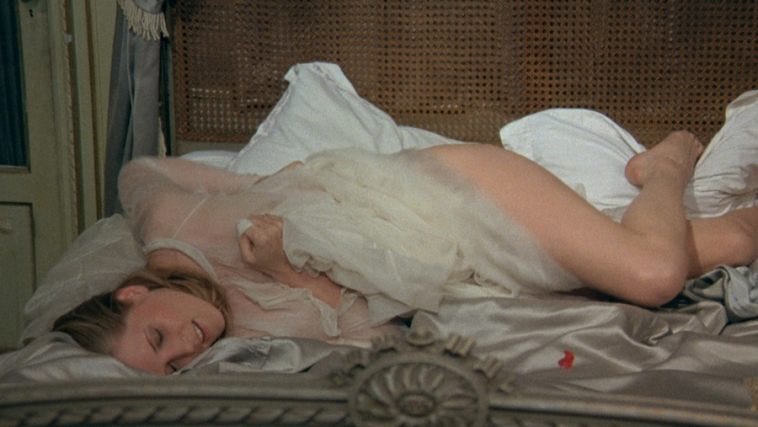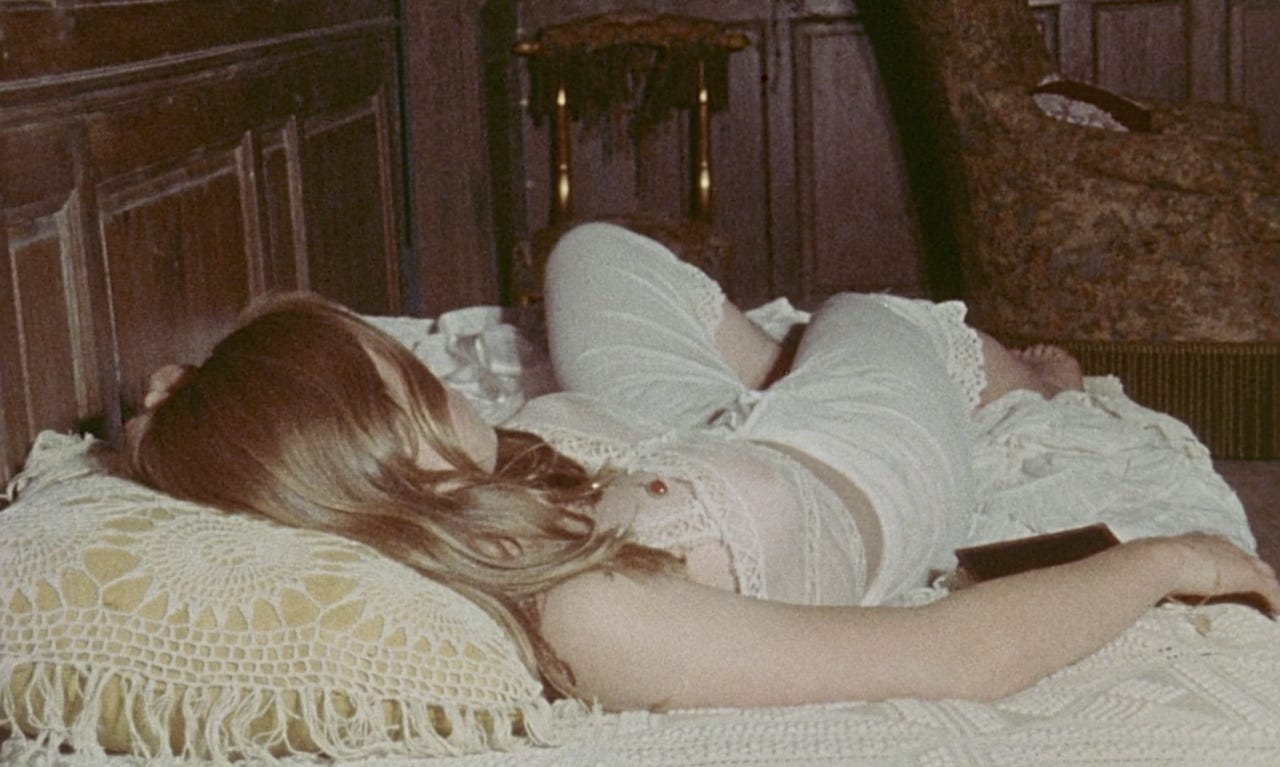Spoilers for Immoral Tales (1973). Trigger warnings for discussion of sexual themes and sexual assault.
Walerian Borowczyk’s first explicitly erotic film, Immoral Tales, is an uneven anthology that is often far too concerned with shots of naked women than it is with the wider themes the title cards suggest.
There are four tales included in the picture - although a fifth was featured in early cuts before being removed and expanded into the 1975 feature The Beast (La Bête) – each one reportedly diving into the connection between sex and the natural world, sex and religion, the exploitation of the lower classes and lust within the Catholic Church.
Interesting titbits can be taken from each of the stories. The Tide is the most sensual, exploring an illicit lust and linking to something as natural as the tide moving in and out. The most complete and haunting piece is the tale of Countess Erzsébet Báthory, which has parallels with Pier Paolo Pasolini’s Salò, or the 120 Days of Sodom in its depiction of the upper class abusing the peasantry. The fourth piece, Lucrezia Borgia, is the least explicit sexually, but perhaps most explicit in its satirical assault on the Catholic Church.
However, it’s the second piece - Thérése the Philosopher – that focuses on Borowczyk’s philosophical leanings. A pious young girl (Charlotte Alexandra) is punished for being late home from mass. Locked away for several days for reflection with little more than religious paraphernalia and a plate of cucumbers.
Little needs to be said about what happens in the room. This segment is the most closely related to pornography. But Borowczyk’s framing of the shots – focusing more often on the framed pictures of Christ and various religious figures – creates interesting parallels. By being pious, the girl is instructed to desire a closeness with God.
Strangely enough, I recently attended a church service where the topic of human desire, and the fact that God made us specifically to have desire was discussed in detail. As an atheist – but one who has an interest in the idea of faith – I find it curious that this reading can be taken from passages in the Bible, and yet the Christian church often feels the need to dictate the direction that this desire is aimed.
The images of religious figures work on multiple levels. They are both the impetus for the girl’s sexual exploration; her pleasure bringing her closer to God. But also, a representation of the judgement she would receive from those who lead her religious teachings. One of the starkest moments comes towards the end, when she lays on the bed, covering herself with a stole.
Again, this can be read in multiple ways. The stole, which would normally be placed over the shoulders of her priest could be the final step to her reaching ecstasy and becoming closer to God. In another reading, she is quite literally covering up her shame with religion and hiding behind piousness, which the church has often been accused of.
Borowczyk is unwilling to give a final comment. The opening card states that Thérése was given a sainthood after being assaulted by a tramp. In the final moments of this segment, after she escapes the room, we see her chased down by this man but it’s little more than a throwaway.
From a modern perspective, it could be a comment on how women’s bodies are policed by men. We shame women for enjoying sex, but then expect them to fulfil our desires. We simultaneously want women to be saints, mothers and whores, but at particular times.
It’s hard to say whether Borowczyk intended this sort of feminist reading. His framing often suggests a more lecherous view of women – the next segment on Countess Bathory is full of extended nude sequences - and his focus in this anthology is on the church first and foremost. The opposing themes make Thérése the Philosopher the most interesting but unsatisfying segment in Immoral Tales, with Borowczyk never delving deep enough into sexual liberation to offer a concrete ideal.
Writer/Director: Walerian Borowczyk
Starring: Charlotte Alexandra









